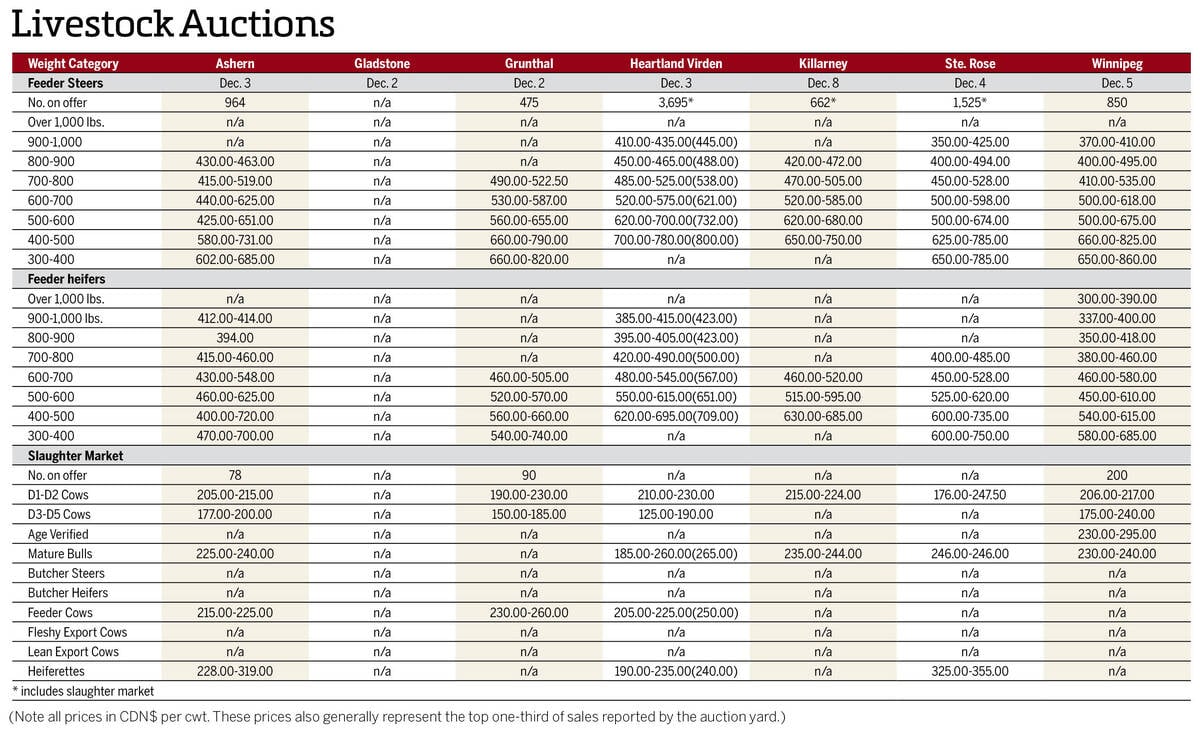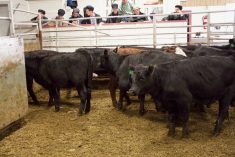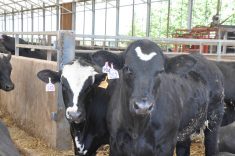Wet weather across Manitoba has dampened haying hopes for dairy and beef producers.
For dairy producers, waves of rain have made it difficult to put up hay before alfalfa reaches the pre-bud stage, after which protein levels decline.
“That’s our goal, but Mother Nature’s been making it kind of tough to do that,” said Henry Holtmann, a Manitoba dairy farmer who sits on the board of the Dairy Farmers of Manitoba.
Read Also

Manitoba cattle prices Dec. 10
Weekly cattle prices from Manitoba’s major livestock auction sales Dec. 3-Dec. 10.
Hay quality is less of a concern for dairy farms who make silage, but “if they’re trying to do dry, it’s been a pretty tough spring.”
Why it matters: Persistent rain and cooler temperatures make it difficult to harvest high-quality, protein-rich hay, potentially affecting feed quality.
Manitoba Agriculture’s June 25 crop report said first-cut dairy haying in eastern Manitoba was only 60 per cent complete.
“There may be a significant amount of feed harvested as round bale silage this year given that weather conditions are making it difficult to put up good quality dry hay,” it read, adding that some eastern producers were worried about quantity and quality of feed being put up for winter use.
Most first cuts for silage were done, Manitoba Agriculture reported. Hay stands were progressing quickly and weather was also affecting beef producers’ efforts to make hay.
Holtmann estimates about 20 per cent of his farm was not traversable due to mud when it was time for first cut.
“We decided not to travel on (those areas) and make ruts. That’s our choice, but a lot of farmers are going through those areas and trying to get the crop off.”
Matthew Atkinson, president of Manitoba Beef Producers, also noted weather challenges. As well as rain, “because it’s been cooler out, some of the hay is a little later than in the last couple of years.”
Manitoba Agriculture weather data shows much of the east with near or normal growing degree days between May 1 and June 23, but the rest of the province has fallen below 95 per cent of average.
Alternative options
If dairy producers miss the ideal protein window, they can still use later-cut hay, but may have to supplement protein with distiller’s grains or canola meal. That will add cost.
Some dairy producers look forward to the second cut, which should take place toward the end of July, and are hoping for good weather for third and fourth cuts of hay.
“Depending on when farmers do it, it can have lots of protein in it,” Holtmann said, especially if the weather warms and rains are less frequent.
“It’s looking good, as long as we don’t keep getting rain,” he said.
















